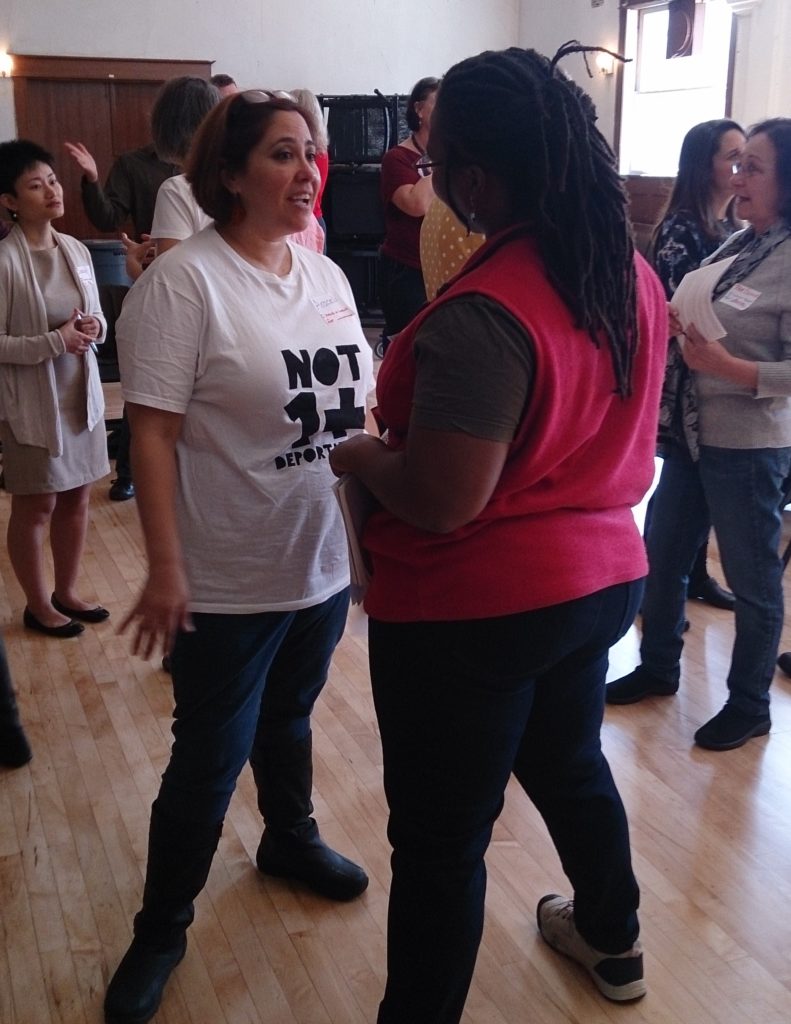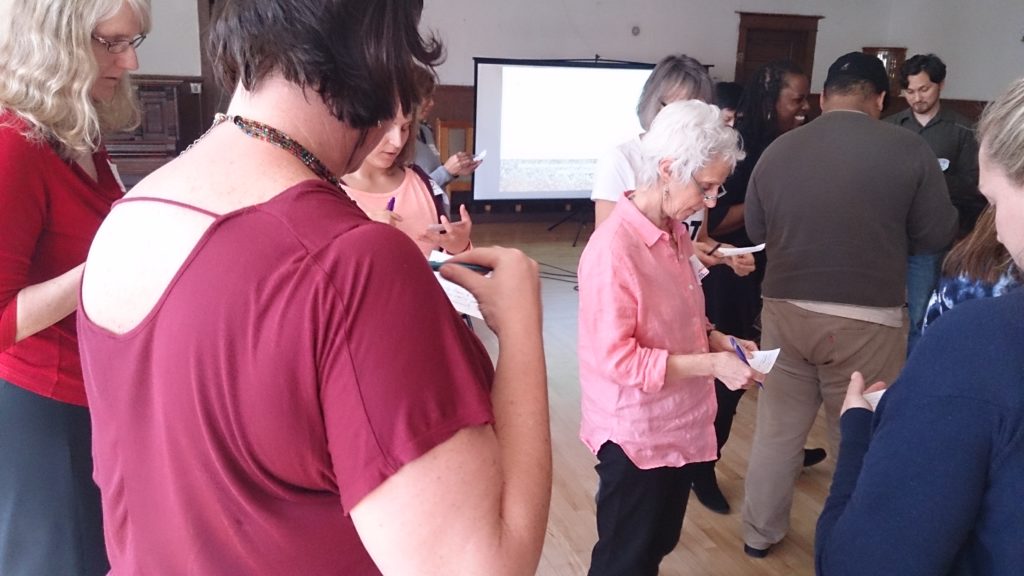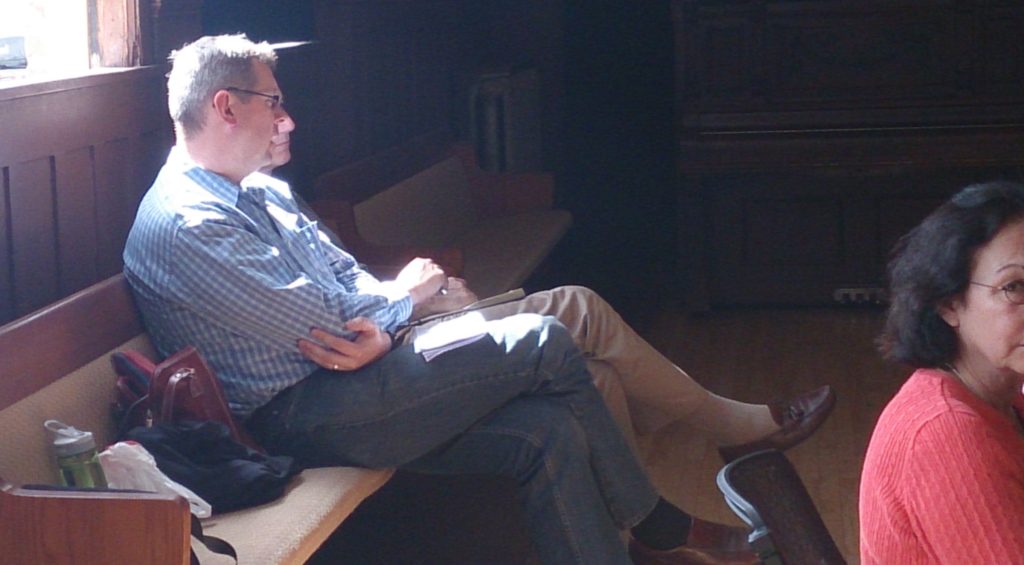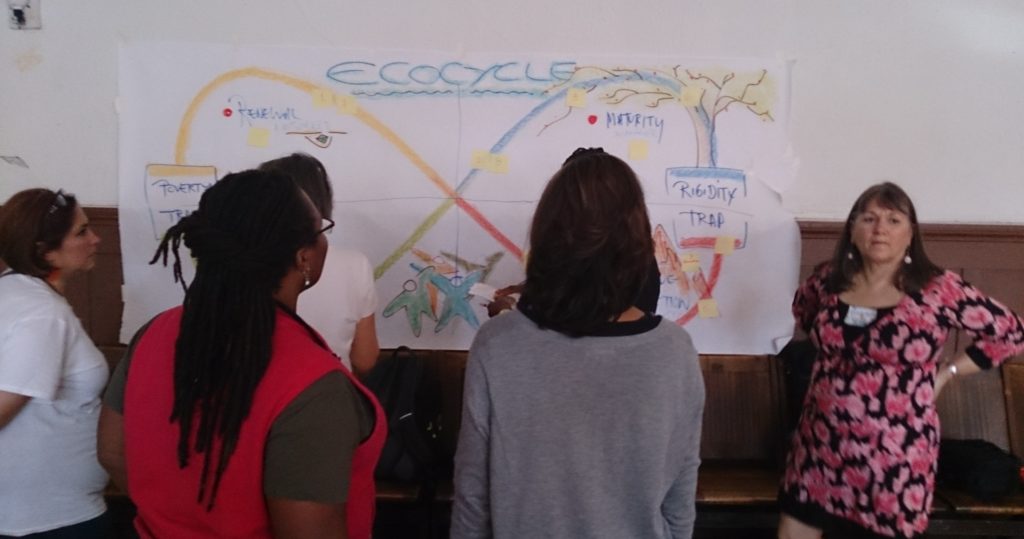Last year I was inspired to mimic a cool format, criticisms and cures, on the topic of facilitating in complex contexts. I have found myself recently in conversations with people who can’t see the value of using Liberating Structures (LS), of engaging in immersions or communities of LS practitioners for people in NGOs, international development organizations and other cause related groups. There seem to be some unique barriers – and I’m not sure I have them right, so school me in the comments. But there seems to be some unique challenges in the NGO sector that I think are related to the diversity and complexity of the sector, and that creepy crawly sense of scarcity that comes into play. There are other sectors, like the Agile Programming world, who have adopted LS quickly – perhaps because LS gives with Agile philosophy and practices where are pretty specific. There is little such shared philosophy or practice in the NGO world. So I thought I’d try a C&C around this topic. (P.S. if you don’t know what Liberating Structures are, watch this little video!)
P.S. If you are interested in joining me in a Liberating Structures immersion in Atlanta, Georgia, USA September 18-19 check out
https://www.eventbrite.com/e/liberating-structures-immersion-workshop-atlanta-tickets-62928099640
PS. If you are interested in LS in Europe, join the Liberating Structures Learning Festival in The Hague, Netherlands, October 7-9, go to
https://liberatingstructures.eu/the-hague-ls-festival/

Criticism: Why should I go to a Liberating Structures Immersion workshop. I already know how to facilitate?
Cure: LS is not simply about facilitating. It is about essentially stripping down our group interaction practices to the bare bones to better understand how to unleash and engage everyone. It is about finding that space between over and under-control. It is about getting real work done, not just using clever techniques to keep people amused. If we have a practice that can help us diagnose and design for real needs, that is worth the time invested. Besides, once you get the hang of LS, you can design meetings in half the time as traditional approaches – or less. Even better, as you role model using LS, others will adopt it, so this is about behavior change in a system, not just one person learning something new.

Criticism: Liberating Structures takes away all of my control.
Cure: Yes, and that is bad because? Group process is not about our control as leaders or facilitators or whatever. It is about getting stuff done together. So instead of framing in terms of control, focus on the purpose of the gathering and create the space (using the LS) to enable people to get that work done. Is there a risk? Compare it to having an awful meeting and getting nothing done, and that risk grows very small. This may be a great moment to reflect on our need for control and how that negatively impacts groups. Think about it. Do YOU like being controlled? And by the way, it will most likely be more enjoyable and the next time you invite people to a meeting, they may be happier saying “yes.”
Additionally, in NGO work we are often stating our values to be participatory, and led by those we are working with, not leading them. I don’t know about you, but I’ve found there are some bad habits I keep having to break around what I think is right, how I think things should be done. LS help me from falling back into those old patterns by using just the right amount of STRUCTURE, as opposed to keeping CONTROL.

Criticism: Meetings are fundamentally a waste of time. I don’t need to learn how to design and run better meetings, I just need to get rid of all of them.
Cure: Purpose. The meetings you may have been forced to attend or lead may have been worthless. If you are in a very hierarchical and/or large organization, you may be suffering from bad meetings. By all means, stop those.
Next, think about what do people need to do with each other to meet organizational goals? How much clarity can you generate around purpose? Don’t confuse purpose with an agenda. Purpose is the reason to meet. If there is no purpose, don’t meet. If purpose is unclear, then there is a reason to meet. If purpose is clear, then an LS-infused gathering can convert that purpose from idea, assessment, action and first steps. There are six questions that have emerged from the LS community that are really helping me think about meeting (or project, or strategy) purpose.
- What is the purpose of our work? (What are we “making,” for whom and how do we know it is of value.)
- What is happening around us that demands change in our work? (If nothing, well go have a coffee and congratulations!
- What are the challenges and wicked dualities we are facing to do our work?
- Where are we starting, honestly?
- Based on what we now know, what is made possible?
- What are our first steps in those possibilities and how will we know we are making progress?
When groups can seriously consider and answer these questions, tapping into each person’s perspective and knowledge, much more becomes possible. This can be framed from the perspective of a status update or retrospective, all the way to the launch of a major initiative (with tweaking of the questions, of course!)

Criticism: As an NGO or international development organization, we don’t have the luxury of going to capacity building workshops. We are too busy address others’ capacity building needs.
Cure: Calculate how much time is wasted in boring, unproductive, inappropriate meetings and group interactions. Query what you know about good adult learning. How are you applying that to the capacity building you are doing? If you don’t cultivate your own capacity, how can you do that for others? If money is an issue, ask for a scholarship. The worse thing you can hear is no. The best thing might just be a yes. You are WORTH it!

Criticism: People are getting totally annoyed with me breaking them down into groups, doing 1-2-4-All and all that. Come on!
Cure: I have struggled with this and what is dawning on me and others is that there are some essential interaction patterns or microstructures in LS that need repeat practice until they become habitual. We have a lot of things we have habituated in our meeting practices – we are just not very aware of them. These basic structures, once cultivated and practiced, become automatic instead of feeling like they are imposed upon us. Read this useful post on Medium.

Criticism: Complexity is a buzzword or indicates a mess so big we can’t deal with it. I’m done with complexity.
Cure: Go back and read this blog post!
Nothing too constructive to add, just commentary on the format, which is fun. Last week I got to be part of a workshop with Chihiro Nakao. He’s a lot bit like Henri. He has this VERY fun practice of talking for 15-20 mins about whatever is on his mind – sometimes it’s a story, sometimes it’s an analysis of how the Japanese Kanji characters have been mis-translated into English, sometimes it is a landscape painting. Then he sits and waits. The rule though is that he only accepts complaints about what he’s said. No questions – which to him presumes he has an answer. It was VERY fun. And, very useful. Especially as people caught themselves mid-question and reframed it into a complaint. I like your complaining setup for this post.
I love it. We have to play with this!!
Hello Nancy,
Thank you for this post. Your write-up inspires a lot of additional thoughts, so instead of simply replying here, I am tempted to also blog about this and we’ll anyway continue our conversation online soon.
Thank you for sharing deep insights and new questions too – I think that’s the spirit that one needs to embrace Liberating Structures (and a lot of collaborative work) at its fullest.
Warmly,
Ewen
Post a crosslink once you have blogged!!! Thanks
Hi Nancy,
Thanks as always for digging deeper. My experience from being a Liberating Structures user in the international development world (and that might apply elsewhere) is that it is so much more powerful to do it than talk about it, trying to convince people they need it. So after a week long strategy workshop (using adaptations of Strategy Knotworking), when people admit that on day one they were resentful and exhausted, and on day 5 they were energized, that’s a good moment to talk about how the (liberated) structure helped us get there. Another thought is around the need to adapt to the cultural flavor of the place and community where you do your work. So it might also be that pure LS lands more easily in the Agile world, because it is culturally so similar to the place and people where LS started. And finally, while I am a big fan of the powerful experience of learning LS in a workshop setting, I have found that the fact that you can read the instructions online and start playing is a wonderful, low cost-of-entry way to understand what this is and why one would want to learn more about it.
Eva, as always, THANK YOU! I just am nodding in strong affirmation of your insights!
Thanks, Nancy, for your lucid – as usual – post. Never having come across Liberating Structures before our joint “mapping & facilitation” dance at that awesome conference in Zambia, I am a total convert now with respect to the need for and power of such a catalytic approach to scalable group conversations!